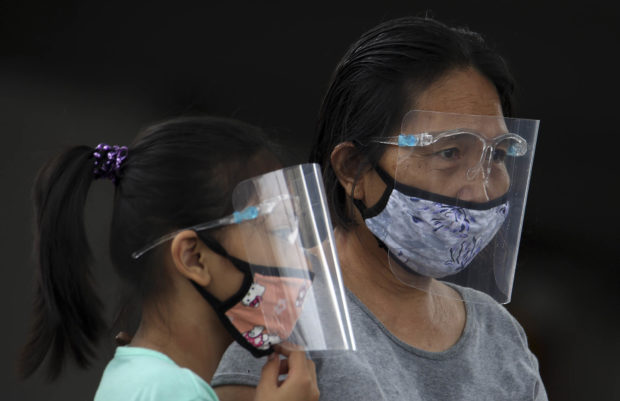Wind dynamics simulations show face shields absorb COVID-19 particles
By Carlos Manuel Eusoya
 |
| PHOTO: Philippine Daily Inquirer |
The effectiveness of face shields in decreasing exposure to COVID-19 particles has not yet been confirmed nor denied by health experts. An attempt to study the protectiveness of face shields was recently done by a University of the Philippines (UP) wind engineer. Engineer Joshua Agar, a wind dynamics expert, conducted three simulation exercises to measure the efficacy of face shields against particles in the air. Each simulation represented different scenarios.
But how were these simulations carried out? What were the different situations represented by the simulations?
Simulation 1: Facing the infected person
The first scenario occurs when the wearer of the face shield is facing an infected person. Suppose the distance between them is 1 meter and the infected person sneezes or coughs. Engr. Agar said that the face shield will redirect the airflow and form air vortices on the sides of the face shield. Vortices are masses of whirling air. They can act as suctions, pulling the virus particles inside the face shield.
“Nagkaroon ng reverse flows po [sa face shield]. Nagkaroon po ng mga vortices po...doon po sumilong kung anong airborne particles sa likod ng face shield, kasama pa ‘yung face natin. Kung wala tayong face mask tataas po ang chances na ma-contract ang virus,” Agar explained.
Simulation 2: Not directly facing the infected person
The second scenario has the same parameter as the first (1 meter in-between distance), but this time, the wearer of the face shield does not face the infected patient. Instead, he faces sideways (45 degree angle away from the cough or sneeze).
Agar explained that vortices will still form on the sides of the face shield. Virus particles may still accumulate. In fact, he said that it is more dangerous if the wearer does not directly face the patient. “Mas malala po ngayon kung naka-face kayo ng sideways from the source,” the aerodynamics expert added.
Simulation 3: Particles are already suspended in the air
According to Agar, this scenario is the most dangerous of the three situations. In this simulation, there is no infected person coughing or sneezing. The COVID-19 particles are already suspended in the air.
He said that face shields can act as “vacuum cleaners”, absorbing particles suspended in the air. Therefore, using face shields in an area where the virus is rampant. “Sabi ng Center of Disease Control and Prevention (CDC) airborne na ang particles...kung nag-walk po kayo across doon sa environment kung nasaan ang virus, nag-act po kayo ngayon as vacuum cleaner. Hinihigop mo ngayon ang nasa air, so doon po nagsettle ang airborne particles sa likod ng face shield at sa face,” he noted.
No research has studied the efficacy of face shields against COVID, but these aerodynamics simulations show that the country’s face shield policy provides no guarantee against the virus. Agar, however, will not publish this research due to the lack of funds.
“Medyo masakit po sa bulsa to publish it. Siguro ipaubaya nalang o i-refer sa iba and sila nalang mag-pursue.” He is also open to collaborate with other experts who are willing to study the aerodynamic effects of face shields further.
Report source: CNN Philippines
